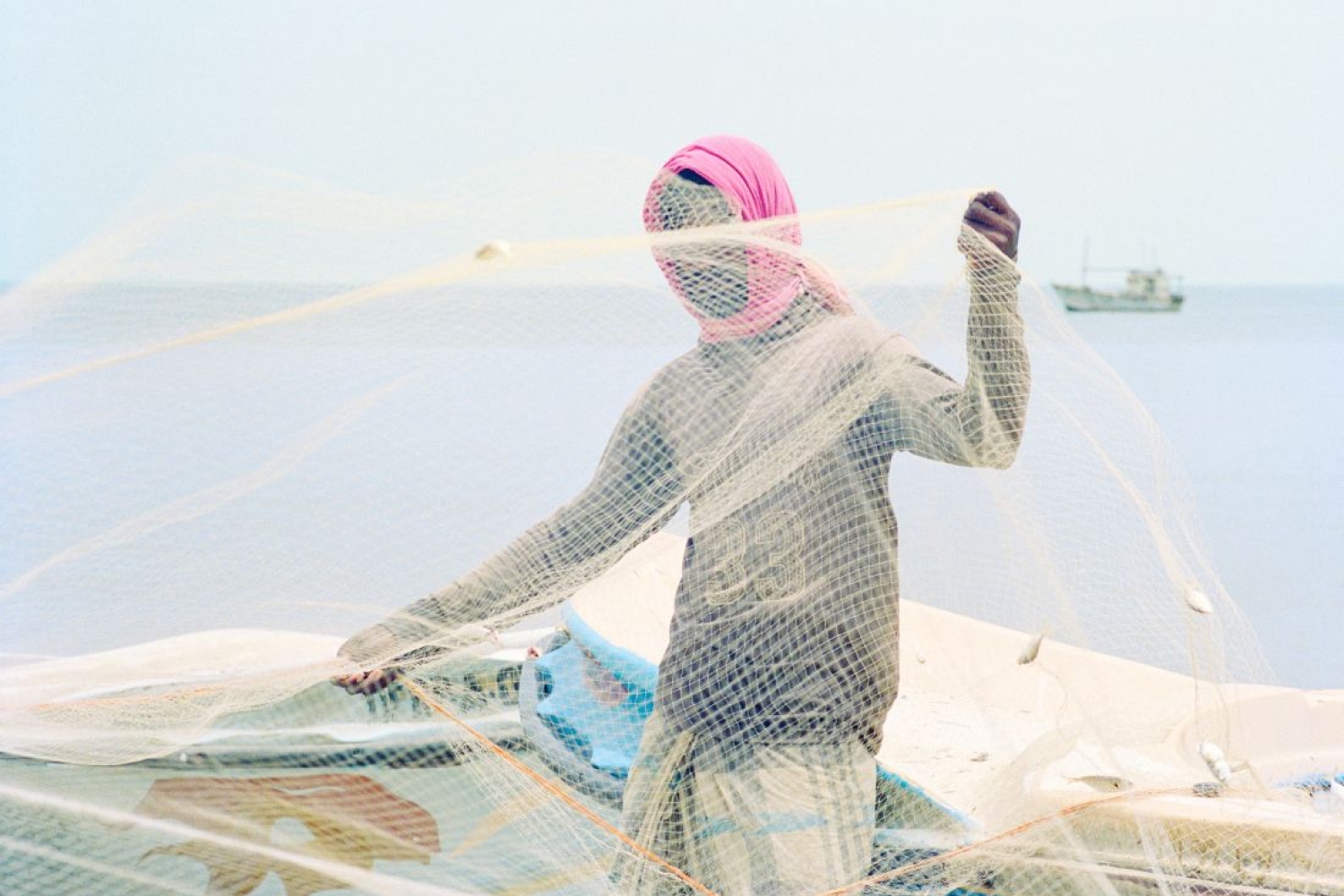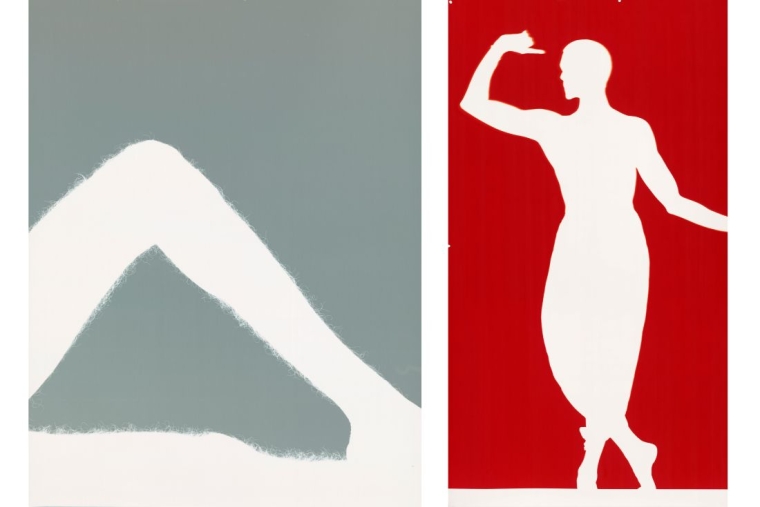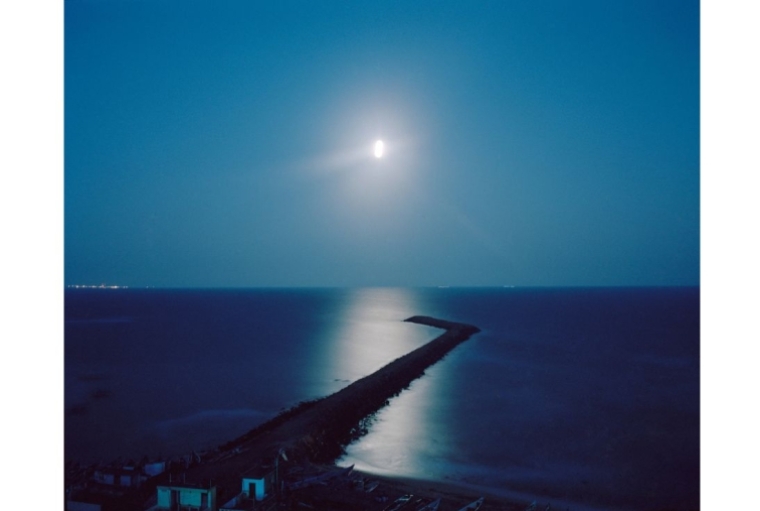
Vasantha Yogananthan, 'Looking For Love', 2018, Archival Inkjet Print on Canson Platine Fibre Rag, 40 x 57.5 cm

Vasantha Yogananthan, 'Looking For Love', 2018, Archival Inkjet Print on Canson Platine Fibre Rag, 40 x 57.5 cm
Kandyan musician Amunugama Suramba is mid-movement. He beats a wooden double-headed gata beraya drum, worn around his waist, playing a song with sacred Buddhist associations. He stands on a grassy ridge, the low-angle perspective framing his figure against a dramatic sky. Modernist photographer Lionel Wendt’s (1900-44) black-and-white gelatin silver print, Suramba drumming (c.1933-44), is part of a new group show of modern and contemporary Sri Lankan photography at Jhaveri Contemporary in Mumbai. Exhibited alongside Wendt are Cassie Machado (b.1982) and Vasantha Yogananthan (b.1985), all three of whom have both Sri Lankan and European ancestry, transnationalism having shaped the lives and practices of each. Photography itself can be traced back to 1840s Sri Lanka, its first century almost exclusively in service of colonial rule, depicting essentialised ethnographic types or picturesque landscapes ripe for exploitation. Wendt, Machado, and Yogananthan’s experimental aesthetics, by contrast, have sought to challenge the medium’s imperial history. Yogananthan’s series A Myth of Two Souls (2013-2021) is a contemporary retelling of the Ramayana , an ancient Indian epic text written in stages between the seventh and third centuries BCE. Machado’s body of photograms, When Colours Return Home to Light (2024), is an imaginative collaboration with Wendt: employing some of the novel techniques he pioneered, to explore present-day South and Southeast Asian diasporic identities in Europe.

Cassie Machado, 'When Colours Return Home to Light IX', 2024, Photogram enlarger silver print, 74.2 x 57.8 cm. (left) | 'When Colours Return Home to Light VII', 2024, Photogram enlarger silver print,
Wendt encountered modernist art while living in London between 1919-24, taking up photography from c.1933 after returning to Sri Lanka, engaging with European avant-garde aesthetics while also celebrating the island’s heritage. Suramba accompanied Wendt to the UK’s capital in 1934 to record the soundtrack for filmmaker Basil Wright’s documentary Song of Ceylon (1934), a poetic critique of British colonialism (1796-1948), which was by then nearing its end. Wendt championed Kandyan dance as part of a larger early-twentieth-century cultural renaissance in Sri Lanka, following art historian Ananda Coomaraswamy’s book Medieval Sinhalese Art (1908), which condemned Western imperialism and celebrated Kandyan craft. Kandy was a Sinhalese kingdom ruled in its final decades by Tamil monarchs, who practiced Hinduism and patronised Buddhism. The region, with its own subsistence-based communal land practices and ring of defensive forests, was the very last territory to be conquered by Europeans in 1815: uniting the island into a single polity for the first time in modern history. Suramba drumming has deep significance for Sri Lanka, as does Wendt’s practice as a whole, created during a pivotal period of societal transformation. The introduction of universal suffrage and elected representatives in 1931 sparked a series of social changes: expansion of basic medical care and rice subsidies, repairs to ancient irrigation works, the redistribution of land, and support for local food production.

Vasantha Yogananthan, 'The Bridge To Lanka', 2013, Archival Inkjet Print on Canson Platine Fibre Rag, 109 x 134 cm
On display at Jhaveri Contemporary are images first published in Yogananthan’s photobooks from the series A Myth of Two Souls: Exile (2017), Howling Winds (2019), and Amma (2021). Yogananthan has described the project as operating in a surreal space between fiction and reality. 15 Photographed along north or eastern Sri Lankan and south Indian coastlines, Howling Winds offers a poetic reinterpretation of a chapter of the Ramayana in which Rama searches for his wife Sita, who has been kidnapped by the Lankan king Ravana. Writer Arshia Sattar translated ancient poet Valmiki’s version of the mythic epic tale for Howling Winds : in the text Rama orders hundreds of thousands of animals from all around the world to build a bridge across the Gulf of Mannar, made of forest wood and mountain peaks, in an area where a chain of natural limestone shoals exist between the two land masses. 16 This passage is symbolically suggested by Yogananthan’s Crossing the Sea (2018): a photograph of a fresco housed in Trincomalee’s Hindu Koneswaram Temple, which was restored in 1952 after its previous building was destroyed by Portuguese colonialists in 1622-24, with earliest records relating to the spiritual site dating from the sixth century BCE. A crack in the wall runs down the right-hand side of the image, the painted surface depicting three small boats as a series of cream and red brushstrokes against a pale blue sea, framed by rocks rising from the water and the outline of mountains emerging from wispy clouds on the horizon.
When Colours Return Home to Light is a series of life-size photograms, depicting members of the South and Southeast Asian diaspora in Paris, where the portraits were created. Photograms are images made without a camera: Machado’s sitters and sensitive paper are both momentarily exposed to light in the studio, the final image capturing silhouettes in brilliant white. The artworks themselves are produced as silver prints, similar to Wendt’s own photographic materials in the 1930s-40s. Machado’s participants are all connected to forms of cultural representation as either broadcasters, models, artists, or dancers. She spent considerable time with each before and after entering the studio: listening to stories of their lives and kinship networks, reflecting on histories of empire and its legacies in the present. One participant, who runs a podcast on South Asian identities and culture, stands with her knees crossed and outstretched hands upturned in When Colours Return Home to Light V. Machado created a series of deliberate light leaks while making the piece: strips of reddish orange static spill across the figure and pale green background, marking traces of time passing. Such an interplay between figuration and abstraction can also be found in Wendt and Yogananthan’s work, each playing with and undermining photography’s reputation for documentary evidence or stable record for scientific knowledge systems.
Challenging photography’s colonial role in reproducing ecological extraction or ethnographic stereotypes – Wendt, Machado, and Yogananthan all offer an expansive and unbounded idea of identity in the context of Sri Lanka. Rather than reinforcing exclusive ethnic categories, Wendt traced connections between Hindu and Buddhist cultures, while Machado and Yogananthan situate the island’s aesthetics in relation to either the Indian subcontinent or South and Southeast Asian diaspora in Europe. Marking a century since Wendt’s return to Sri Lanka in 1924 after encountering European modernism in London, the exhibition considers how two distinct and different historical moments shaped the experimental practices of three artists who have each reimagined Sri Lankan photography.
Words Dr. Edwin Coomasaru
Date 20.08.2024